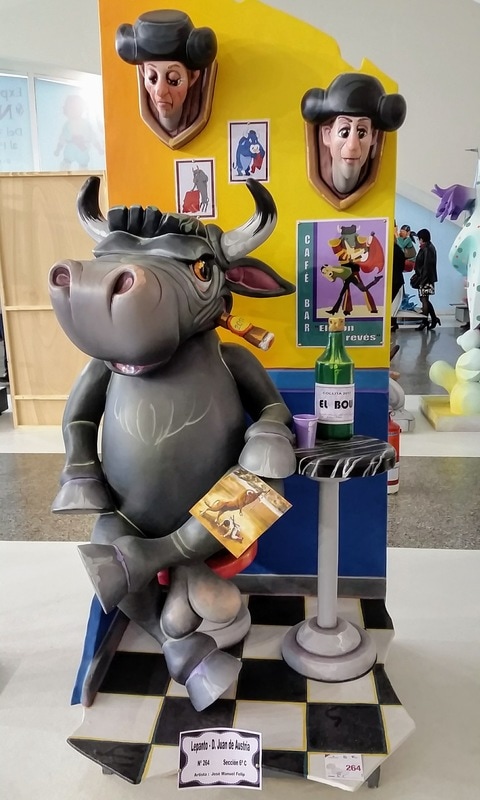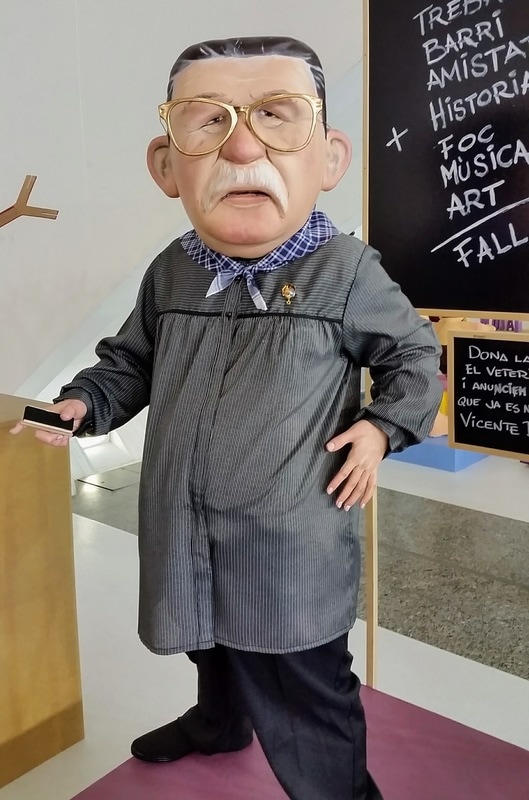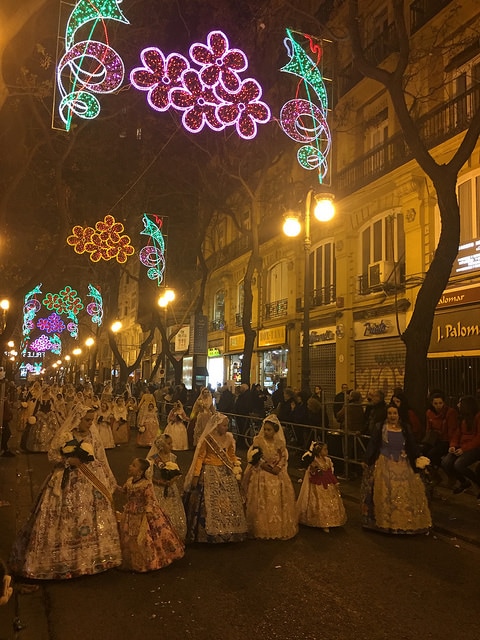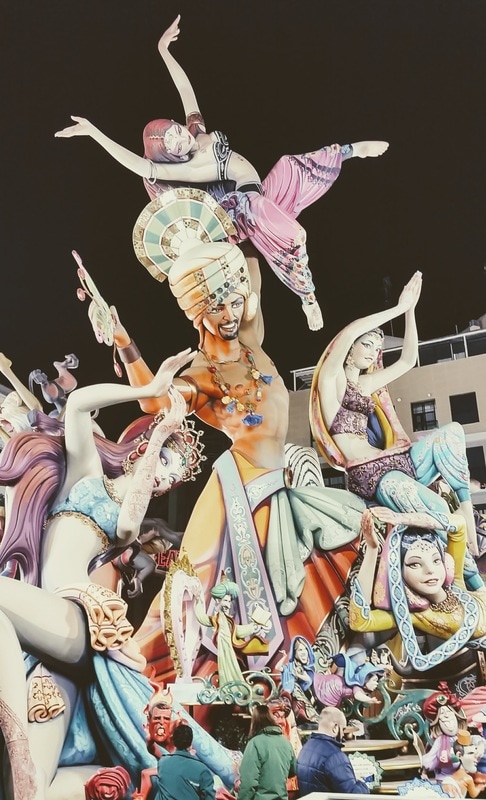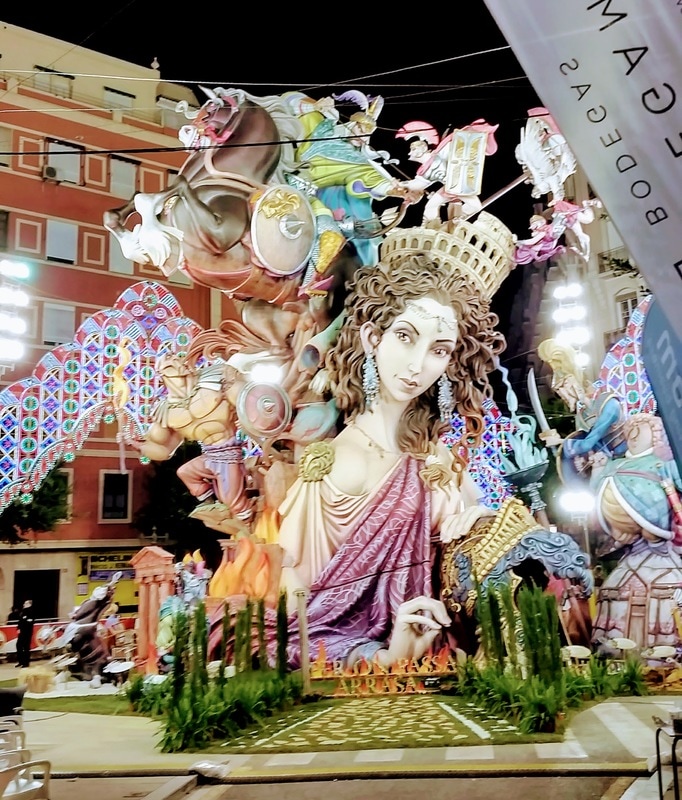Las Fallas: Valencia's insanely amazing festival
The beginning
To say we’d heard about Las Fallas, Valencia’s biggest and best annual festival, would be a serious understatement. In fact, the question that generally immediately follows “how long have you lived in Spain?” is, “…so have you been here for fallas?” After experiencing our first fallas, we’ve realized that this is in response to the fact that 1) there’s a LOT of pride in the festival that has been taking place in Valencia for hundreds of years and 2) there’s literally nothing else like it. It’s an insane combination of art, fire, explosions, food, tradition, and of course, alcohol.
For the first two weeks of March, the festivities and anticipation slowly grows. The firecrackers begin to explode more frequently, as more and more people start to crowd the streets. All culminating in the final weekend as one of the craziest parties anyone could ever imagine.
For the first two weeks of March, the festivities and anticipation slowly grows. The firecrackers begin to explode more frequently, as more and more people start to crowd the streets. All culminating in the final weekend as one of the craziest parties anyone could ever imagine.
Las Fallas
|
Wikipedia says that Fallas is in commemoration of St. Joseph, but most Valencianos disagree, even though the festivities conclude on St. Joseph Day (March 19) each year. Instead, we’re told it’s a celebration started by carpenters centuries ago and the art of carpentry that is unique to this city. As the story goes, every spring and for hundreds of years, the carpenters of Valencia would gather all of their wood scraps from winter, throw them into the street and construct a sculpture before burning them. Essentially, a creative, and cathartic, take on spring cleaning.
In many ways Fallas truly starts the day after the festival ends, on March 20, when community members gather at their barrio’s comissió fallera to begin brainstorming a theme for next year’s falla. For 12 months, the community holds various fundraising events and slowly constructs their falla; incredible wood and paper mache statues that range from five to seventy feet tall. The falla, along with similar, but much smaller wood statues called ninots, come together to create a scene, which is often a political or social satire. Then, on March 15, all of the fallas are set up in the streets. And with 600-800 fallas dotting a city of nearly one million people, it feels as if they’re on almost every street corner, blocking traffic and drawing massive crowds. Four days later, on March 19, around midnight, every falla is burned to the ground - “La Crema.” |
As if burning hundreds of beautiful works of art weren’t enough, the city celebrates with daily mascletas, rhythmic explosions to "stimulate the body," through sound. At 2 PM for the entire 19 days, the entire city leaves work to walk down to the main plaza, crack a beer and listen to 10 minutes of sound only fireworks that are so loud, the streets shake and the windows raddle. On the last week fallas, fireworks are also set off nearly every night (or, morning consider they’re always after midnight). Kids walk around with boxes of fireworks that are being constantly set off in the street (day and night) and sometimes thrown at your feet. One thing’s clear – Valencianos, young and old, love to set things on fire and blow shit up.
The Ninots
Before the fallas are brought to the city streets, each neighborhood submits a few ninots (smaller statues that are part of the elaborate scene) which are displayed in an indoor exhibition. For three weeks, people vote on the best ninot of the year, and the winner is "pardoned" from La Crema - the fiery death each ninot must endure at the end of every Fallas festival.
The Experience
At the beginning of March, churro, bunuelo (pumpkin donut) and taza de chocolate stands popped up for the first time across the street from our flat. Within a few days, a mojito stand had joined the party. A few days later, party tents had appeared in a nearby plaza, complete with stages, dance floors and bars. Lights were then strung across every street, flashing the names of Spanish beer brands like Amstel and Alhambra, companies that clearly wanted in on the action. While the ‘verbenas’, (street parties featuring food trucks, live music, DJs playing until the wee hours of the morning) as they’re called, kicked off the weekend before, Fallas didn’t officially start until the night of the 16th, a brisk spring evening in the Valencian capital. At this point streets were closed off and beer tents were erected on what seemed to be every city corner. The city quickly filled up with tourists from all over Spain and the rest of Europe (we even heard a few Americans) as crowds for mascletas and around fallas grew to be almost too much to handle.
From Thursday to Sunday, every day, the schedule seemed to go something like this -
- 7 AM, La desperta: The morning ritual where Valencianos walk through the streets, throwing petardos (firecrackers) on the ground to wake up the city.
- 10 AM - 2 PM, Pasa calle: Falleros and Falleras walk through the streets in full Fallas outfits followed by marching bands celebrating the festival.
- 2 PM, Mascletas: A massive fireworks-esque display in Valencia’s largest plaza, Plaza Ayuntamiento. Only without the fireworks. Simply noise. And a lot of it.
- 4 PM until about midnight, La ofrenda: Falleras (women dressed in beautiful traditional dresses) bring beautiful bouquets to a huge statue of the virgin Mary in the Plaza de la Virgen, covering her dress with fresh flowers. We’ve seen many families dressed traditionally - even babies wear incredibly ornate dresses with gold jewelry.
- 6 PM, Most verbenas start: Block parties with food, drinks, live bands and DJ's that play throughout the night.
- 12 PM - 1 AM, Castillos de fuego (fireworks) in the Turia.
- 1 AM - 4:30 AM, Verbenas, verbenas, verbenas.
With a comissió fallera located under our bedroom window and one of the larger fallas half a block from our apartment, we’re getting the real deal fallas experience. We actually didn’t have much of a choice, really. So rather than complaining about the constant firecrackers, fireworks, and marching bands playing ‘Take 0n me’ and the lack of sleep, we decided to fully embrace the chaos. We went to as much as we could. We learned that celebrating Fallas takes incredible stamina. We managed to revive our youthful vigor a little, staying out until after 5 AM, drinking and dancing, on multiple occasions. Our Spaniard friends were unimpressed. A few friends noted their parents stayed out until at least 6 AM. Either way, we did what we could to take it all in.
Although this may well be the biggest and wildest party either of us has ever attended, there’s a level of seriousness, tradition and pride about Fallas that is impossible to miss. And the work that goes into this festival, which is unlike any other in the world, has already started again. The countdown to March 1, 2018 has already begun.
The Fallas (some of our favorites from 2017) |













